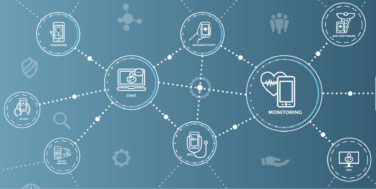Employees are more stressed now than at any other point in their professional careers. At least that is according to a poll from mental health provider Ginger,1 which found 69% of respondents agreeing with that statement. Additionally, 62% report losing one hour of productivity a day due to their COVID-19-related stress, while 32% lose two hours per day.
Survey after survey reveal similar findings. Just over half of employees (51%) surveyed by Monster2 have experienced burnout working from home. And Qualtrics3 found that loneliness is the biggest challenge for new WFH employees; 25% are struggling with social isolation and 10% say feeling disconnected from their teams makes things harder. Speaking of which, in the “Q2 CNBC|SurveyMonkey Workplace Happiness Survey,”4 20% said their job is now much harder and 34% said it was somewhat harder.
But it is not all bad news. According to that same survey, 38% are happier to have their job now than before the outbreak (likely due to the high unemployment rate) and 57% say they are very satisfied with their job working from home. Even 43% of people surveyed by getAbstract5 say they would be open to working from home more often moving forward.
However, the question many companies are dealing with is: How can we help those employees who are struggling?
What Companies Are Doing to Help
While the concept of COVID-19-releated stress may be new, the idea of helping employees deal with anxiety is not. Many companies already offered programs to help employees manage their mental well-being even before the pandemic, while others created new initiatives to specifically address issues caused by the current health crisis. The following is only a small fraction of the types of things companies within our industry are doing to provide support and keep their employees sane during this difficult time.
Ashfield: Natalie Ivanovs, a holistic nurse by training and a Trainer at Ashfield Patient Solutions, part of UDG Healthcare, helped establish Ashfield’s Building Resilience Program prior to the pandemic, but now many employees are finding it to be an important tool in managing their anxiety and maintaining productive behaviors. Building Resilience is a self-directed, on-demand program consisting of videos and documents, made available through the company’s intranet, designed to help Ashfield employees not only manage their anxiety level but actually build a skill set to help them remain focused and effective. For instance, the program provides a series of modules on breathing techniques, grounding and centering, mindfulness, gratitude, and self-care. “We were very excited to see pockets of teams take the concepts forward and are encouraging them to maintain that level of engagement as they work remotely,” Ivanovs says.
Heartbeat: The agency rolled out an expanded range of well-being-boosting programs, including virtual meditation and yoga classes, COVID-specific telehealth consultations, and online events meant to foster connections with coworkers, says their VP, Human Resources Michelle Edwards. For example, Heartbeat’s internal culture committee, named “Upbeat,” organizes regular team-based competitions to keep Heartbeaters cross-pollinating, such as virtual scavenger hunts and meme contests. Additionally, to help increase empathy and understanding, Heartbeat initiated its “WFmyH” program, in which Heartbeaters anonymously share how the COVID-19 virus has personally affected them and the variety of challenges they’ve faced.
“But even with well-executed, organization-wide initiatives, one size doesn’t fit all when it comes to supporting mental health,” Edwards explains. “Our HR and Employee Experience teams have been taking time to check in with individual Heartbeaters one-on-one. Whether it’s a personal discussion about how to manage life-at-home issues, or helping overwhelmed parents set up food delivery services, we try to make sure each Heartbeater has access to whatever he or she needs to stay as healthy, safe, and stress-free as humanly possible.”
AbelsonTaylor: Kristine Adams, Director of Office Services at the agency, says they are also working to keep their employees’ spirits high during this time. Through the AT Community channel on Microsoft Teams they share encouraging messages, such as Motivation Monday or Feel Good Friday, as well as popular weekly picture contests that vary in content such as pics of yourself as a kid as a spin on Bring your Kid to Work Day, funny Corona Haircuts (or lack thereof), and your strangest Amazon purchase. “The hope is that by taking a little time to connect from afar, we not only get to enjoy a bit of respite from worrying about whatever we are struggling with that day, but we will all return to the workplace a little closer and with a whole newfound gratitude for everything and everyone,” Adams says.
UDG Healthcare: As a response to the pandemic, the company built WellSpace, a new website dedicated to supporting the physical and mental well-being of their staff. Filled with an abundance of helpful content, from step-by-step mental health support to activities for the entire family to enjoy, WellSpace is available 24/7, 365 days of the year. Employees are encouraged to dip into this resource whenever they need to as well as join live events during the workday, which include yoga and fitness classes.
“The response across the UDG Healthcare group has been phenomenal, with more than 5,000 visits to the website in the first week of its launch,” says Eimear Kenny, EVP and Group Head of HR, UDG Healthcare. “The site has really brought us together and we will continue to use this platform to aid well-being and connectivity across the group as we adjust to the ‘new normal’ way of life today and in the future.”
Outcome Health: In addition to daily all-company emails with key updates from the CEO and daily “stand-up” meetings designed to both communicate key priorities and facilitate dialogue from each department leader, the company also established several initiatives to help employees feel less isolated. One of their largest is “Affinity Group Happy Hours,” with sessions on specific topics such as “Parents with Young Children” or “People Living Alone.” After the first facilitated meeting each affinity group is encouraged to continue to meet to support each other.
“This pandemic has also created work/life balance challenges for many of our employees,” explains Danny Dellacona, Chief Human Resources Officer. “For example, dependent care services that so many used while at work have been closed and may take longer to be fully restored. To help provide support, we have created a flex work program providing our employees the option to reduce their hours without incurring a significant reduction in salary. They can also opt in or out of the program should they require more or less flexibility in the months ahead.”
Stark / Raving Branding + Digital Marketing: Founder and Creative Director Matthew Stumm has found that during this time of uncertainty, the best things leaders can provide to their employees is structure and clarity. He suggests holding regular virtual morning meetings—same time every day—to check in with your team and delegate workload. He also notes the importance of being observant during your virtual interactions, as the “virtual” signs that someone needs help, guidance, or a quick pep talk are the same ones that occurred in the office—you may just have less time to observe them in a virtual setting. He also encourages leaders to be honest by providing your employees with the facts about the business, clients, new business, etc. “When employees don’t have the facts, they may start to create their own, which leads to increased confusion and anxiety,” he says.
Making the Transition Back to Office
Eventually, offices are going to start opening back up (if they haven’t already in some places), and that will lead to new challenges and stress that companies will need to manage. In the “Q2 CNBC|SurveyMonkey Workplace Happiness Survey,” 53% say there should be a limit on the number of people allowed to gather in one place, 47% are in favor of companies testing employees before they return to the office, and 41% prefer all employees wear masks.
IBM has considered all of these things, and much more, as they have laid out the plans for what is required for their employees to return to the office. “Our return to workplace strategy is not driven by any calendar, nor is it connected to a government re-opening of a city or state,” explains Michael Ricci, Managing Director, IBM Healthcare & Life Sciences, and IBM Senior State Executive, Pennsylvania. “To help employees feel safe and remain productive, we’ve taken a data-driven, evidence-based approach. We’ve let employees know that work from home will continue for most employees for the foreseeable future. We are planning our return in waves that will be determined based on health and policy in each market. Select employees will return to the workplace only once those specific milestones are hit.”
For example, in the return to the workplace guidelines (detailed in full at www.ibm.com/blogs/policy/reworking-work), decisions will be made market-by-market and based on milestones such as hospital caseloads, consecutive declines, building readiness, public transportation, and more. To prepare for Wave 1, the company has also established new workplace norms including on-site health screening for those who enter the building, daily health pre-certifications for employees, redesigned traffic flow within the office to prevent congestion, barriers between employees and servers in the cafeteria as well as touchless transactions, and floor markers to delineate safe distancing. Waves 2 and 3 can only occur after scaling of testing and contact tracing have improved, in addition to other measures.
“We all need to pursue safe and effective approaches to bringing all professionals back into the economy,” Ricci adds. “Our goal is to do so by putting the health and safety of our workforce at the forefront.”
References:
1. https://hrexecutive.com/hres-number-of-the-day-coronavirus-stress.
2. https://www.monster.com/career-advice/article/overworked.
3. https://qz.com/work/1830436/a-qualtrics-survey-checks-in-with-people-who-now-work-from-home.
4. https://www.surveymonkey.com/curiosity/cnbc-workforce-survey-may-2020.
5. https://journal.getabstract.com/wp-content/uploads/2020/04/ga_remote_survey_2020_compressed.pdf









